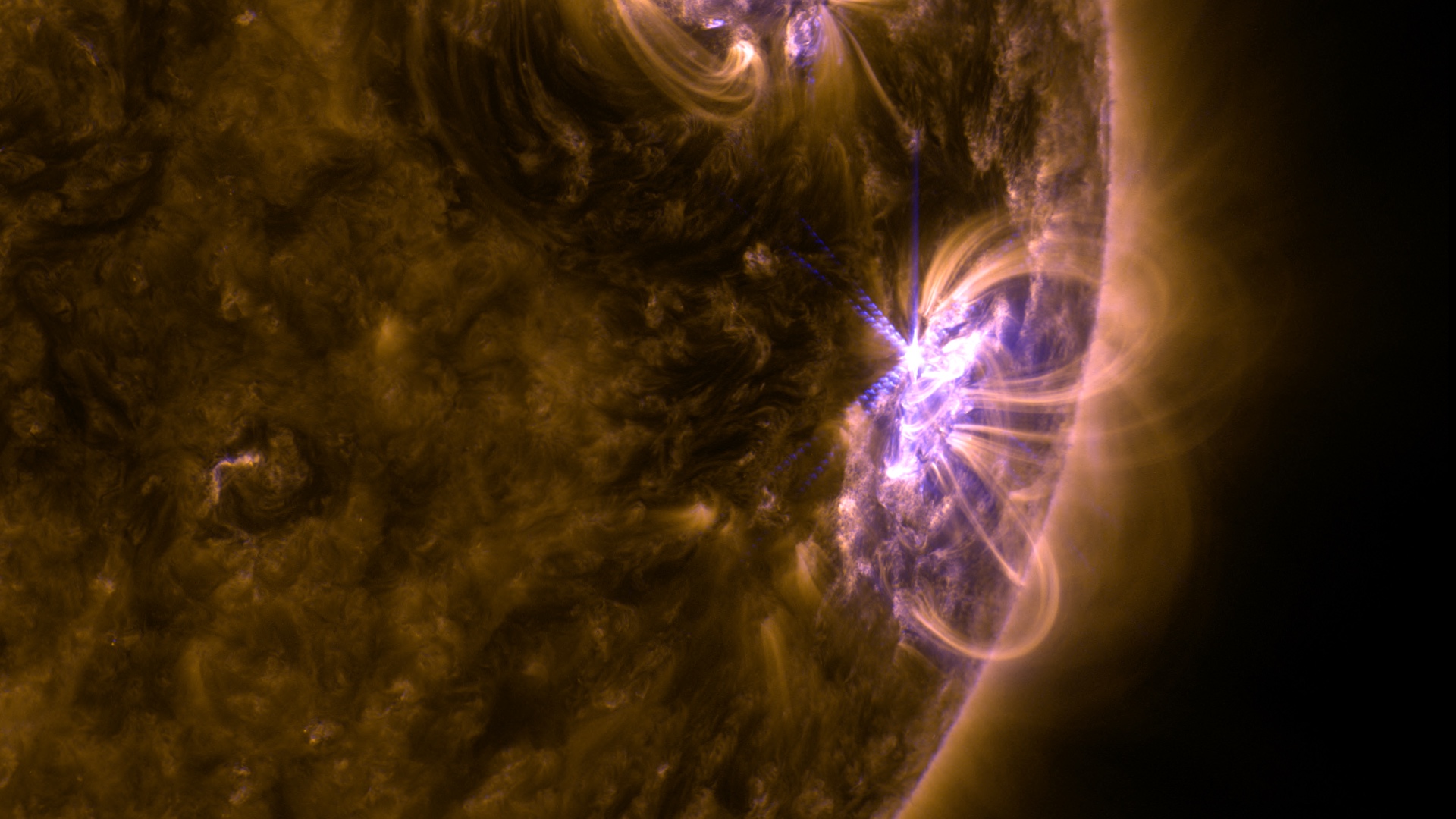Solar Flares Interfered With Radio Network’s Ability to Warn People About Hurricane Irma

Credit to Author: Kate Lunau| Date: Fri, 08 Sep 2017 18:20:29 +0000
A series of massive explosions on the Sun caused a radio network designed to warn people of hurricanes in remote regions, including the Caribbean, to go on the fritz during the time period when it would have been issuing information about Hurricane Irma, both the manager of the network and a NOAA representative confirmed to Motherboard.
Solar flares like the ones reported this week are known to interfere with high frequency radio signals. “When that solar flare happens, it’s like static frying,” Bobby Graves, Net Manager for Hurricane Watch Net (HWN), told me over the phone. This group of licensed amateur radio operators, based across North and central America and the Caribbean, works with the National Hurricane Center to disseminate information about storms. When a solar flare happens, “it’s like they just turned the radio off,” Graves, who lives in Brandon, Mississippi, told me.
Bob Rutledge, lead forecaster at NOAA’s Space Weather Prediction Center, confirmed receiving “isolated” reports from the Caribbean about radio blackouts related to the series of solar flares observed on the Sun this week, including from HWN. “It’s truly a complete [radio] blackout,” Rutledge said. “That signal can’t get through.”
HWN also gathers data from people on-the-ground and sends the information back to the NHC in Miami, according to Graves. He said that blackouts this week lasted from 20 minutes to up to four hours.
Geomagnetic storms make everything sound “gurgly,” like you’re talking “underwater”
“It’s sad, knowing you’re trying to get the information out, or maybe someone out there is trying to talk back to you,” Graves told me. Radio operators have to wait out the solar storm, and “hopefully [the people] still there when the frequency is recovered.”
Starting on September 4, a series of solar flares belched radiation and solar plasma at Earth—including three of the largest and most powerful types of solar flare, which are called X-class, Rutledge told me. (Many more were M-class, a lower designation.)
One was an X9.3 flare, the largest recorded in about a decade, according to NASA. NOAA’s space weather agency issued warnings for geomagnetic storms, which are major disturbances in our planet’s magnetosphere that can meddle with all kinds of technologies we rely on, including satellites, radio communications, and GPS signals. According to Graves, these storms make everything sound “gurgly,” like you’re talking “underwater.”
Rutledge told me that the worst of the geomagnetic storm’s effects are now “in the rearview mirror.” It’s impossible to predict this perfectly, he said, “but I think we’re at the end.”
No major impacts have been seen on the North American power grid, Rutledge noted, which can be vulnerable: A particularly bad bout of space weather caused the entire province of Quebec to black out in 1989. In the years since, governments like the US and Canada have been assessing the risk to infrastructure from solar storms with an eye to making it more resilient. Agencies like NOAA, NASA, and Natural Resources Canada are responsible for putting out space weather forecasts to provide advanced warning.
Read More: How Space Weather Can Influence Elections on Earth
Induced electric currents related to geomagnetic storms can also cause corrosion in oil pipelines, Rutledge said, as well as problems with GPS navigation signals, another worry. A geomagnetic storm like this likely would have “degraded” the precision of GPS signals in some places, he said, and reports of disturbances could still come in.
I phoned Ljubomir Nikolic, space weather forecaster for National Resources Canada. He told me that no reports of disturbances have been submitted there, but he also said it’s possible reports are still to come, as the storm’s effects are ongoing and private companies like satellite operators might take a few days to alert his department to outages.
As for what’s next, Rutledge told me we could see more solar flares over the next day or two, but we probably won’t see anything as explosive as what was observed earlier this week. As the active region of the Sun rotates from view, it won’t be a concern anymore.
For Graves and his network, not to mention people in the Caribbean who they’re attempting to reach, this bout of bad space weather can’t pass too soon.
Get six of our favorite Motherboard stories every day by signing up for our newsletter.